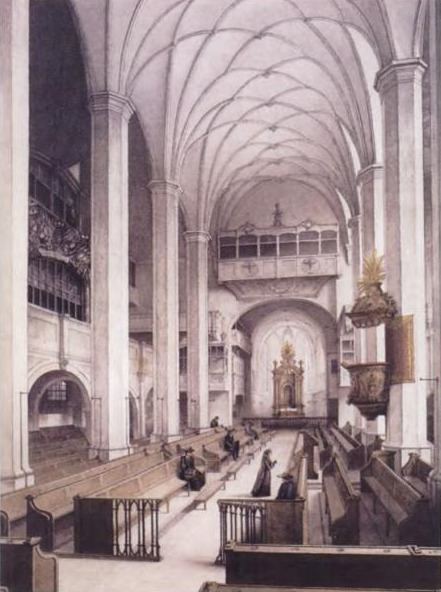Movements 6 | Cantata text anonymous | |
 | ||
Ach Gott, vom Himmel sieh darein (Oh God, look down from heaven), BWV 2, is a church cantata by Johann Sebastian Bach, composed in Leipzig for the second Sunday after Trinity and first performed on 18 June 1724. It is the second cantata of his second annual cycle of chorale cantatas, and is based on Martin Luther's hymn "Ach Gott, vom Himmel sieh darein", published in 1524 in the first Lutheran hymnal.
Contents
History and words
Bach composed the cantata for the Second Sunday after Trinity in Leipzig as the second cantata of his second annual cycle, which began a week before with O Ewigkeit, du Donnerwort, BWV 20. The prescribed readings for the Sunday were from the First Epistle of John, "He that loveth not his brother abideth in death" (1 John 3:13–18), and from the Gospel of Luke, the parable of the great banquet (Luke 14:16–24). The cantata is based on the six-stanza chorale Ach Gott, vom Himmel sieh darein, published by Martin Luther in 1524 in the Achtliederbuch, paraphrasing Psalm 12. The words are used unchanged in movements 1 and 6. An unknown poet transcribed the ideas of stanzas 2–5 into recitatives and arias. Bach first performed the cantata on 18 June 1724.
Scoring and structure
The work in six movements is scored for three vocal soloists (alto, tenor, and bass), a four-part choir, four trombones, two oboes, two violins, viola, and basso continuo. The trombones play colla parte with the choir.
- Chorus: Ach Gott, vom Himmel sieh darein
- Recitative (tenor, bass): Sie lehren eitel falsche List
- Aria (alto, violin solo): Tilg, o Gott, die Lehren
- Recitative (bass, strings): Die Armen sind verstört
- Aria (tenor): Durchs Feuer wird das Silber rein
- Chorale: Das wollst du, Gott, bewahren rein
Music
In the first and last movements, which use the original words of Luther's hymn, the style of the music is "archaic"—the instruments include a choir of trombones doubling the voices. In the first movement the melody of the chorale is sung by the alto in long notes, doubled by two oboes. Each line is prepared by fugal entrances of the other parts on the same theme. The second movement is a secco recitative, changing to arioso for two lines that resemble the words of the chorale, marked adagio. The alto aria is written in "modern" style with a solo violin in lively figuration. The bass recitative is accompanied by the strings. In contrast, the tenor aria is accompanied by a concerto of the oboes and strings, which are silent in the middle section until its transition to the da capo. The closing chorale is a four-part setting.
Selected recordings
The sortable listing is taken from the selection provided by Aryeh Oron on the Bach-Cantatas website. The type of choir and orchestra is roughly shown as a large group by red background, and as an ensemble with period instruments in historically informed performance or a choir of one voice per part (OVPP) by green background.
